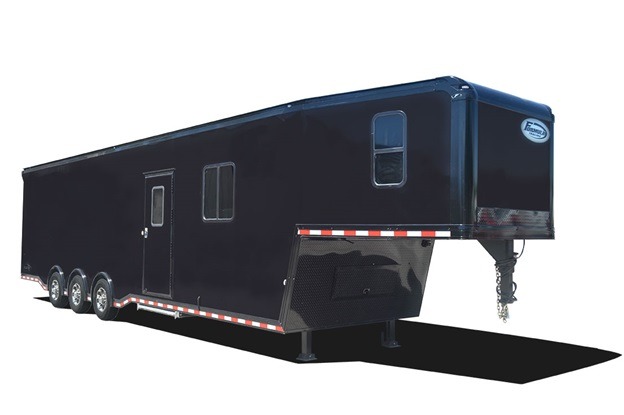When you are looking at buying a trailer, whether concession trailers or some other type, two of the types you will see a lot are Gooseneck and Fifth-wheel. They have a number of advantages over other trailers, they can handle a lot of weight and are safe when towing. Here is a look at the two trailers.
Comparing Fifth-wheel and Gooseneck
Fifth-wheel trailers do not have the pivot point placed behind the vehicle but rather it is over the rear axle. Since that is what Gooseneck trailers have too, this makes the Gooseneck a type of Fifth-wheel trailer. However, there are differences and the main one is in the cargo floor extension. In a fifth-wheel that cargo floor goes over the tractor frame while a Gooseneck floor halts behind its bumper. This is how bumper mount trailers also are. With the Gooseneck trailer hitch the kingpin at the end of a long truss but with a Fifth-wheel, it goes underneath the frame. But this means the Gooseneck can works with a standard pickup truck bed whereas the Fifth-wheel needs a flatbed.
Better weight distribution
There is also the need to consider the effect of the weight of the tongue on the tractor. When weight is placed on the back bumper the frame the frame then acts like a seesaw pushing the front wheels up. That is eliminated when you move the load over the rear axle so the weight is compressed by the rear axle springs rather than lifting the nose of the truck. Concession trailers are then more predictable and safer to handle.
Considering ground clearance
When the load or weight is more on one side of the truck then the other side moves down. When you are towing heavy weights this is important to understand. When the load is full a trailer only compresses the rear axle springs by several inches. The rise height drop needs to be added when the heaviest loads are applied to the bumper. This might lead to hitch-to-road contact especially with bumpy roads and it can be worse when the trailer tilts forwards and more of that weight being moved to the hitch.
Great maneuvering at low speeds
Consider too that placing the trailer’s pivot close to the middle of the vehicle can impact backing up and parking ability. The pivot on the trailer will act like a steering axle so when placing the pivot of the trailer away from the axle of the tow rig, it responds slowly. You will need to back the tow rig further and steer it harder. Fifth-wheel trailers are good at this making them simple to maneuver at slow speeds and to park. Gooseneck trailers are also more maneuverable than bumper-mounted trailers at low speeds.
Conclusion
Choosing a trailer is not something you should rush into. There is a lot to consider, especially in terms of weight, maneuverability, what you need to tow them with and ground clearance concerns. If you are unsure what trailer would best suit your needs rather than an option for private sales from an individual you might want to consider buying from experts in trailers who can talk to you about those needs and help you work out the best trailer for you.

